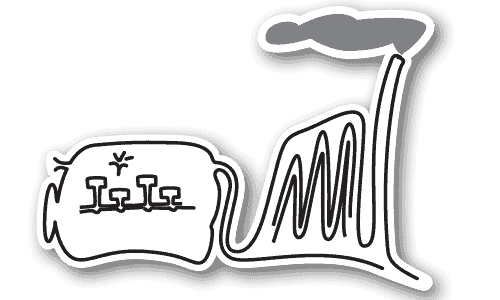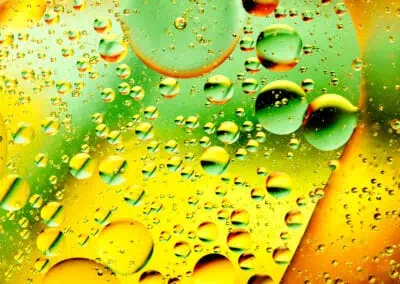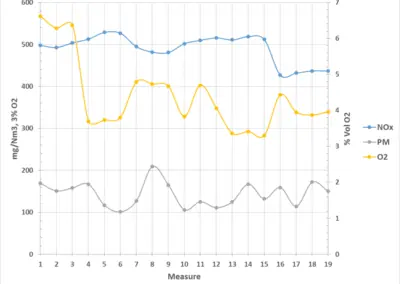PentoMag® | Additive for Marine Diesel Engine
#IMO 2020 and #VLSFO additive
IMO 2020 situation
The callenge of the 0.5 % sulphur cap

If after refueling twice you don’t know how the different types of oil combine, or oil sludge forms, or problems with cylinder lubrication occur, then it’s worth taking a look at our additive PentoMag for Marine Diesel.
Blending fuel oils on a trip is inevitable. Issues surrounding fuel stability and compatibility have never been more relevant, especially in light of the new 0.50 per cent sulphur cap for fuels used in Emission Control Areas (ECAs), which has triggered the development of a range of ECA-compliant products of differing formulations.
Distillate fuel, also known as Marine Gas Oil (MGO), is composed of petroleum fractions that are separated from crude oil in a refinery with a «distillation» process. Residual fuel, or Heavy Fuel Oil (HFO), is comprised of process residues – the fractions that did not boil – and has an asphaltene content of between 3 and 10 percent.
The need to switch to and from one of these fuel variants when entering or leaving an ECA poses a range of issues for vessel operators – many of which are still not fully understood or easily overseen and can easily lead to disaster.
In order to best deal with these difficulties it is essential that vessel operators recognise the characteristics of the various ECA-category fuel grades and how to manage the fuel switch-over. Importantly, when a ship switches fuel it needs to be done safely and effectively so as to avoid any technical issues and to also ensure that the emission limits are not breached. The International Convention for the Prevention of Pollution from Ships (MARPOL) requires vessels using separate fuel oils to develop and utilize written procedures showing how the fuel oil change-over is to be carried out, allowing sufficient time for the fuel oil service system to be fully flushed of all fuel oils exceeding the applicable sulphur content prior to entry into an ECA.
Challenges
Common issues using VLSFO
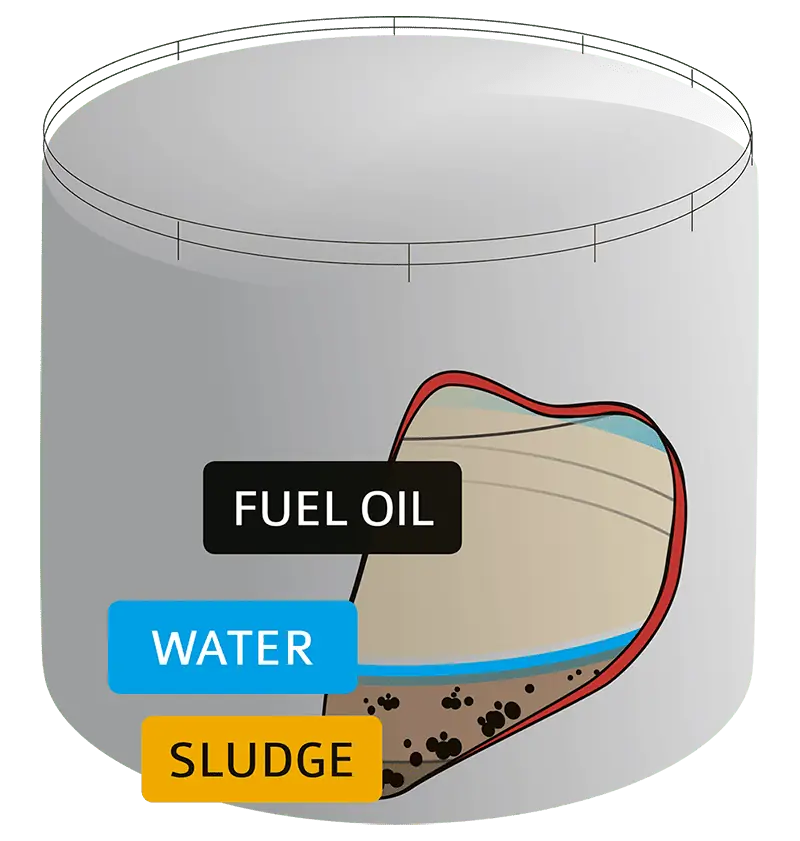
Blending different fuel oils can create challenges in compatibility and stability of the final products
# compatibility and stability issues of fuel blends
Sedimentation and sludge formation can occur in oil tanks, oil preheaters, strainers and fuel lines. The main cause of sediment and sludge in oil tanks and fuel oil lines is due to separation of the water content from the fuel oil and when asphaltenes, waxes and other materials flocculate and settle. In detail sludge particles settles in and accumulates in the bottom. So the industry best practice – without PentoMag additive – is to avoid mixing fuels from different sources and with different formulations as arbitrary comingling leading to incompatibility problems and a loss of stability in the resultant blend. (For example, when a heavy fuel oil (HFO) with a high asphaltene content is mixed with a low-gravity distillate with a predominance of paraffinic aliphatic hydrocarbons the solvency reserve can be depleted and asphaltenes can flocculate and precipitate as sludge.)# sedimentation issues in tank
The potential for a fuel to change condition in storage in certain circumstances, depending on its resistance to breakdown Bulk fuel stored for long periods can become unstable – the asphaltene content can precipitate out of solution causing the formation of sludge. This has the potential to block filters and pipes, leaving tanks with an unpumpable residue. The ‘break up’ is dependent on the nature of the liquid hydrocarbons in which the asphaltenes are suspended. If the medium is aromatic (hydrocarbons in ring formation) then they will remain in suspension but if it is paraffinic (linear hydrocarbon formation) the asphaltenes may have a propensity to coalesce into sludge. Once a fuel has chemically broken down there is no way to satisfactorily reverse the process. Precipitated asphaltene cannot be redissolved. # combustion and ignition problems Total engine failure is possible due to sludge formation in the tank, plugging or erosion of valves and their seats as well as lack of lubrication of the cylinderliners. Combustion and ignition problems to sticky unburned carbon can lead to corrosion. In addition, different qualities of VLSFO prove to be incompatible with each other when mixing with the possibility of strong separation of elements or inability to mix.Our passion for results
To find solutions that pay for themselves
Combustion optimization since 1969
Pentol has 50 years of experience in power industry.
In our first years we worked on singular solutions for ordinary problems: corrosion, slagging, sludge, emission.
Then we started to combine these tasks as the benefits started to add up inside a big picture of power plant optimization.
As we have been focused on improving combustion with additives,combustion engineers started to work at Pentol, hand in hand with our clients.
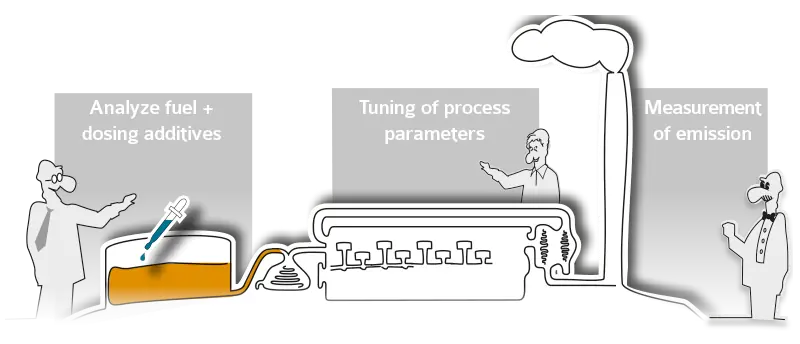
Service as key for success
The combustion catalysts main task is to reduce the emission of unburned carbon. With a higher amount of asphaltenes and heavy fractions of the fuel ending up in the diesel engine, this is very important to keep the combustion inside the diesel engine clean and the stack free of a black cloud.
PentoMag® 4410 contains catalyst that reduce the activation energy required for combustion of the fuel. Atomized fuel will burn faster and the amount of unburned carbon in the emission is reduced by >50%. This reduces fouling in the diesel engine itself but also in the turbo charger and recovery boiler and creates a visible reduction of solid emission on the stack.
As the total dust load carried through the diesel engine is reduced, the time required for cleaning deposits is reduced as well.
Turbo charger efficiency is increased as fouling is reduced a lot and the remaining deposits can be removed without applying force, preventing damage to the blades.
![k-wum-3[1]](https://www.pentol.net/wp-content/uploads/2021/02/k-wum-31.webp)
Our promise
We always see the big picture of a combustion process from fuel to emission. This allows us to work in close collaboration with our customers on finding solutions that reduces emission and pay for themselves.PentoMag 4410
All-in-one solution for marine diesel engines
Pentol has been supplying fuel oil additives for decades to prevent corrosion and deposits and increase efficiency in diesel engines, gas turbines. Pentol has been supplying fuel oil additives for decades to prevent corrosion and deposits and increase efficiency in diesel engines, gas turbines.
PentoMag 4410 is a derivate of our PentoMag 4400 for stationary diesel engines, specifically designed for VLSFO.
It’s designed to stabilize the fuel oil (compatibility and stability issues of fuel blends) prevent sedimentation issues in tank increase combustion efficiency (combustion and ignition problems)
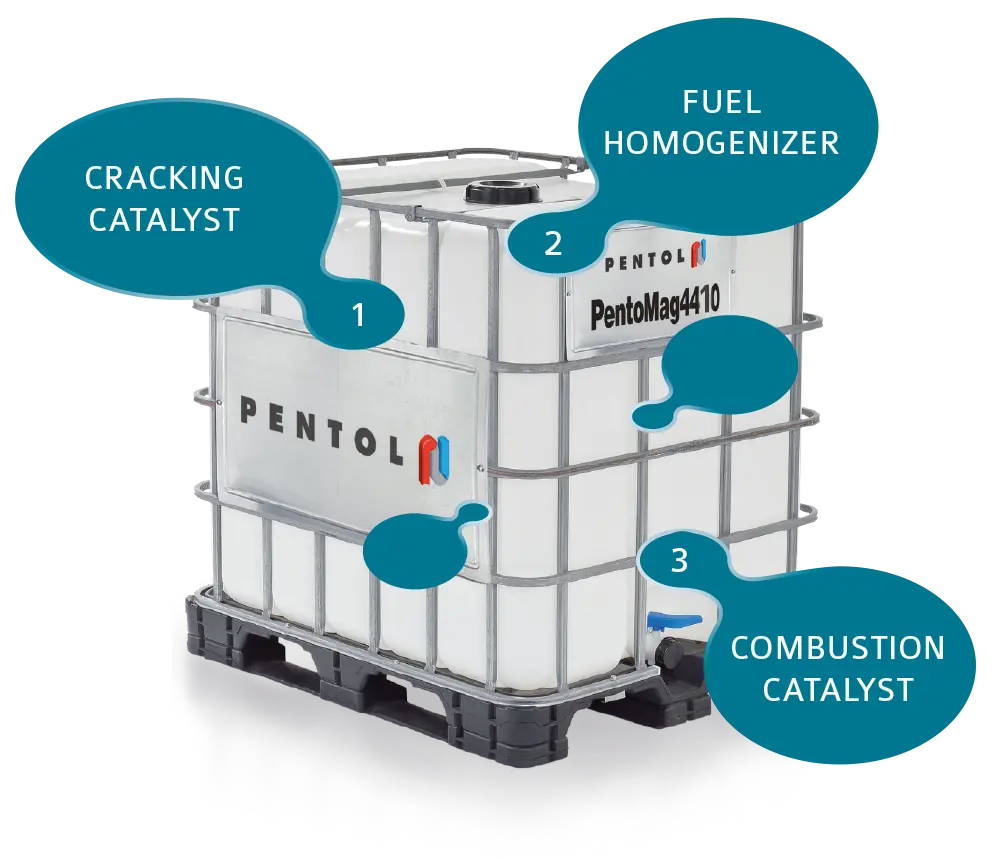
Working principle
Understand tasks and components
Cracking catalyst
Cracks heavy fractions of the fuel oil to improve volatilization.
PentoMag® cracks the long chains of asphaltene and rearranges them in a stable oil emulsion. It helps to disperse sludge, keeps a stable emulsion and prevents new sludge generation. This keeps tanks and tank trucks free from sludge deposits. It prevents the formation of sludge on the injection pumps and nozzles.
Fuel Homogenizer
Why wasting calorific energy, when you can burn it?
Instead of separating and disposing of heavy fractions, they are dispersed in the fuel and burnt by help of the combustion catalyst. As a result, the total sludge absorbed in the fuel separators is minimized and they will be unloaded significantly, reducing the purge cycles and the water consumption.
Combustion catalyst
Reduce emission while increasing efficieny.
The catalyst in the PentoMag® produces a more
complete burn out of the fuel by reducing the
activation energy of the fuel.
Combustion Catalyst
Complete burnout makes fly ash less sticky
The compounds formed during combustion
cause problems corrosion and fouling on
- exhaust valve seats, liners, piston rings
- in the nozzle ring
- on the blades of the turbo charger
- recovery boiler.
- reduced maintenance work
- extended lifetime
The catalyst in the PentoMag® produces a more complete burn out of the fuel by reducing the activation energy of the fuel.
The activation energy is the minimum amount of energy that must be provided by a molecular collision for the reaction to occur. Excess air required for complete combustion is reduced.
Solid emission, CO and unburned carbon is reduced to the minimum.
Consequently, the lack of deposits in the turbo and the recovey boiler lead to improved efficiency.
Without catalyst:
• more unburned carbon • corrosive combustion residuals • higher emission
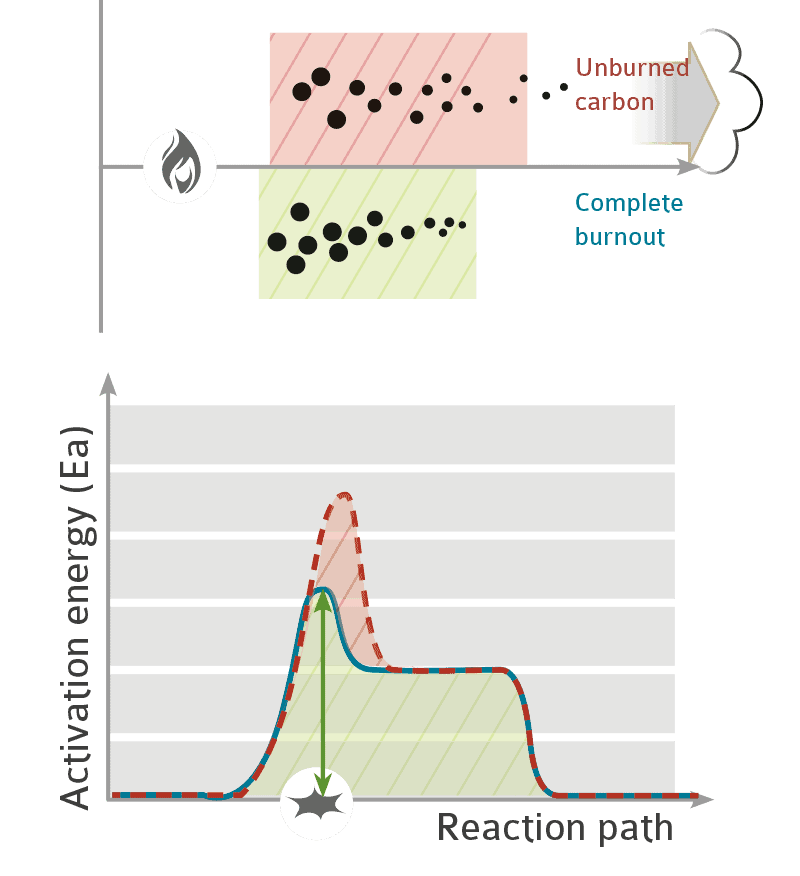
With catalyst:
• reduced activation energy • carbon burnout is more complete
Support in all stages
Approach to implementation security? People, not just additives
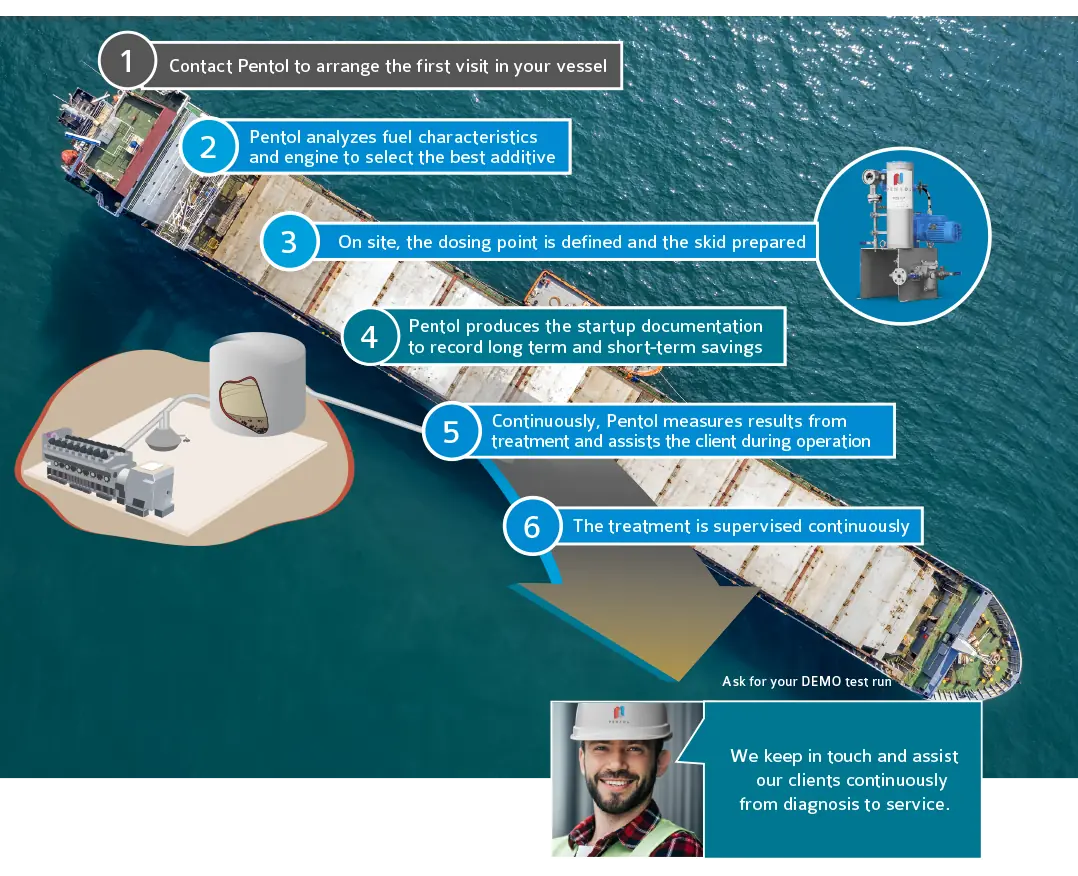
PentoMag® is dosed on the filling line of the settling tank or storage tank by means of an automated dosing pump.
If you are interested, please contact marine@pentol.net directly and negotiate your best price for your demo.
- Contact Pentol to arrange the first visit in your vessel
- Pentol analyzes fuel characteristics and engine to select the best additive
- On site, the dosing point is defined and the skid prepared
- Pentol produces the startup documentation to record long term and short-term savings
- Continuously, Pentol measures results from treatment and assists the client during operation
- The treatment is supervised continuously
With the premise of being ready to explain you and your results for our case study.
Please clarify your expectations in advance: when will the treatment with PentoMag be worthwhile for you and what will the result look like that really inspires you.
And from what date and port of destination you would like to see this result. (Please consider we will need a preparation time to plan and run your demo).
Tell us your opinion
Leave us a short feedback
Download PDF
ADDITIVE » PentoMag® For Marine Diesel Engines » EN
ADDITIVE » PentoMag® For Marine Diesel Engines » DE

